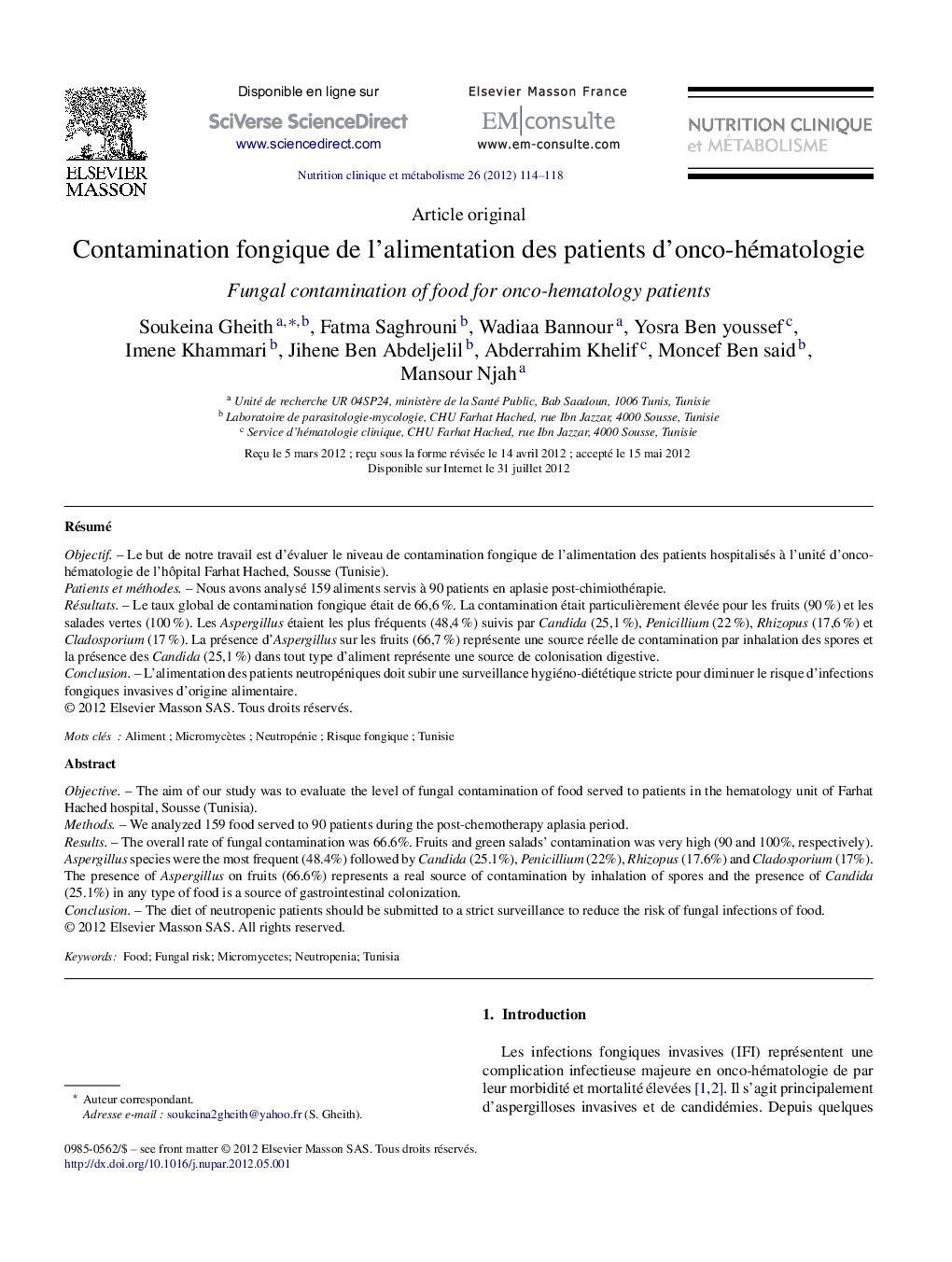| کد مقاله | کد نشریه | سال انتشار | مقاله انگلیسی | نسخه تمام متن |
|---|---|---|---|---|
| 2692059 | 1143406 | 2012 | 5 صفحه PDF | دانلود رایگان |

RésuméObjectifLe but de notre travail est d’évaluer le niveau de contamination fongique de l’alimentation des patients hospitalisés à l’unité d’onco-hématologie de l’hôpital Farhat Hached, Sousse (Tunisie).Patients et méthodesNous avons analysé 159 aliments servis à 90 patients en aplasie post-chimiothérapie.RésultatsLe taux global de contamination fongique était de 66,6 %. La contamination était particulièrement élevée pour les fruits (90 %) et les salades vertes (100 %). Les Aspergillus étaient les plus fréquents (48,4 %) suivis par Candida (25,1 %), Penicillium (22 %), Rhizopus (17,6 %) et Cladosporium (17 %). La présence d’Aspergillus sur les fruits (66,7 %) représente une source réelle de contamination par inhalation des spores et la présence des Candida (25,1 %) dans tout type d’aliment représente une source de colonisation digestive.ConclusionL’alimentation des patients neutropéniques doit subir une surveillance hygiéno-diététique stricte pour diminuer le risque d’infections fongiques invasives d’origine alimentaire.
ObjectiveThe aim of our study was to evaluate the level of fungal contamination of food served to patients in the hematology unit of Farhat Hached hospital, Sousse (Tunisia).MethodsWe analyzed 159 food served to 90 patients during the post-chemotherapy aplasia period.ResultsThe overall rate of fungal contamination was 66.6%. Fruits and green salads’ contamination was very high (90 and 100%, respectively). Aspergillus species were the most frequent (48.4%) followed by Candida (25.1%), Penicillium (22%), Rhizopus (17.6%) and Cladosporium (17%). The presence of Aspergillus on fruits (66.6%) represents a real source of contamination by inhalation of spores and the presence of Candida (25.1%) in any type of food is a source of gastrointestinal colonization.ConclusionThe diet of neutropenic patients should be submitted to a strict surveillance to reduce the risk of fungal infections of food.
Journal: Nutrition Clinique et Métabolisme - Volume 26, Issue 3, September 2012, Pages 114–118